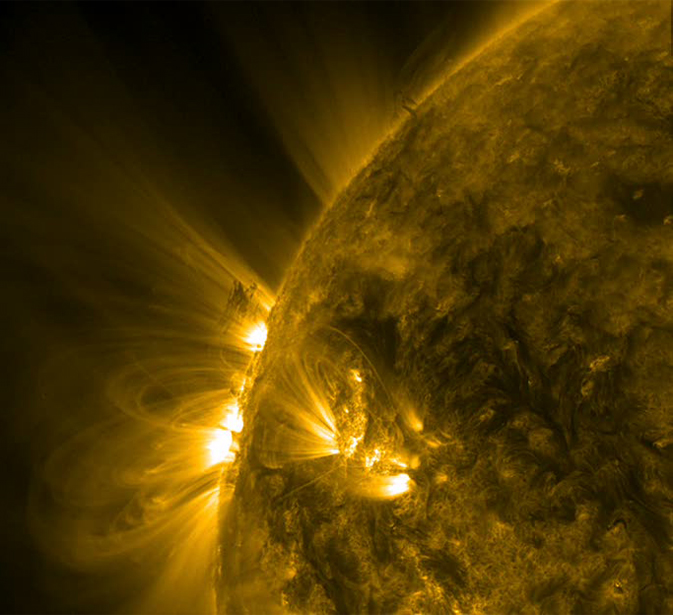The 11-year solar cycle, a recurring oscillation in solar flare occurrence, is thought to be affected by the north–south plasma flow near the Sun’s surface. Material near the solar equator migrates towards the poles. Researchers think this flow, along with the Sun’s internal rotation and turbulent convection is connected to the behavior of the solar dynamo that produces the Sun’s magnetic field. Showing how these complex systems tie together, however, is difficult.
Previously, researchers had used experimental models of the solar dynamo to translate flow observations into calculations of the solar magnetic field strength. These models, however, have been hampered by poor observations of the flow deeper in the convection zone below the surface.
Using an approach known as Kalman filtering data assimilation, Dikpati et al. show that theoretically at least, the lack of observations at greater depths can be overcome to improve solar dynamo modeling.
Kalman filtering is not a new idea. First developed in the late 1950s and 1960s, Kalman filtering is a signal-processing approach used to create a rolling best estimate of a system’s properties when the needed observations are drowned by noise. The technique was a significant boon to early space missions: Computers equipped with Kalman filters helped the Apollo 11 module settle safely on the Moon.
In subsequent years, data assimilation models built around Kalman filtering have been applied to a range of scientific topics, including atmospheric and oceanic dynamics. The approach has only recently been used by the solar research community.
By applying Kalman filtering data assimilation to synthetic solar flow data, the authors found that they could approximate the model’s “true” state even with observational errors as high as 40%. (Geophysical Research Letters, doi:10.1002/2014GL061077, 2014)
—Colin Schultz, Freelance Writer
Citation: Schultz, C. (2015), Can scientists boost solar modeling despite a lack of data?, Eos, 96, doi:10.1029/2015EO023321. Published on 5 February 2015.
Text © 2015. The authors. CC BY-NC 3.0
Except where otherwise noted, images are subject to copyright. Any reuse without express permission from the copyright owner is prohibited.

